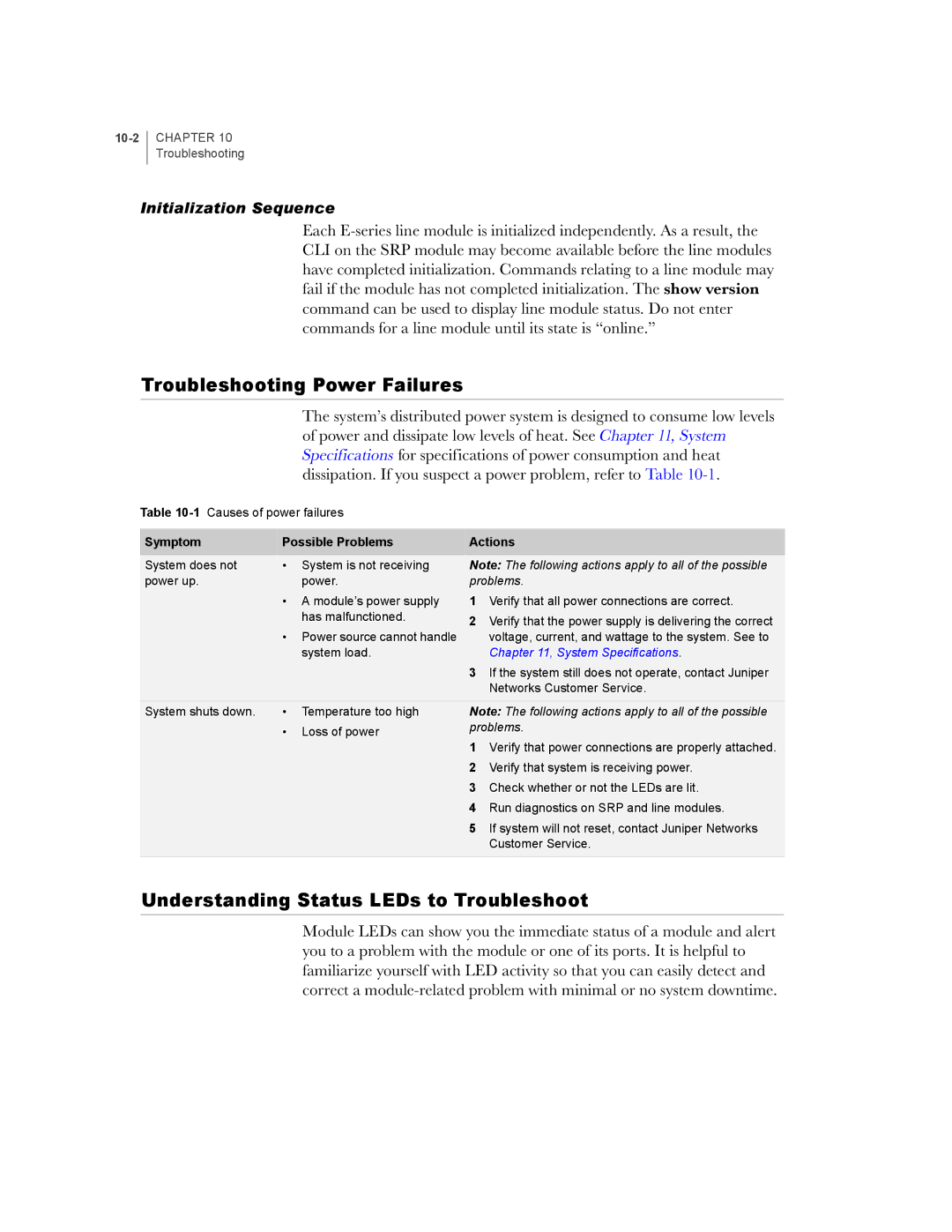
10-2
CHAPTER 10 Troubleshooting
Initialization Sequence
Each
Troubleshooting Power Failures
The system’s distributed power system is designed to consume low levels of power and dissipate low levels of heat. See Chapter 11, System Specifications for specifications of power consumption and heat dissipation. If you suspect a power problem, refer to Table
Table
Symptom | Possible Problems | Actions | ||
System does not | • System is not receiving | Note: The following actions apply to all of the possible | ||
power up. |
| power. | problems. | |
| • A module’s power supply | 1 | Verify that all power connections are correct. | |
|
| has malfunctioned. | 2 | Verify that the power supply is delivering the correct |
|
|
| ||
| • Power source cannot handle |
| voltage, current, and wattage to the system. See to | |
|
| system load. |
| Chapter 11, System Specifications. |
|
|
| 3 | If the system still does not operate, contact Juniper |
|
|
|
| Networks Customer Service. |
System shuts down. | • | Temperature too high | Note: The following actions apply to all of the possible | |
| • | Loss of power | problems. | |
| 1 | Verify that power connections are properly attached. | ||
|
|
| ||
|
|
| 2 | Verify that system is receiving power. |
|
|
| 3 | Check whether or not the LEDs are lit. |
|
|
| 4 | Run diagnostics on SRP and line modules. |
|
|
| 5 | If system will not reset, contact Juniper Networks |
|
|
|
| Customer Service. |
|
|
|
|
|
Understanding Status LEDs to Troubleshoot
Module LEDs can show you the immediate status of a module and alert you to a problem with the module or one of its ports. It is helpful to familiarize yourself with LED activity so that you can easily detect and correct a
